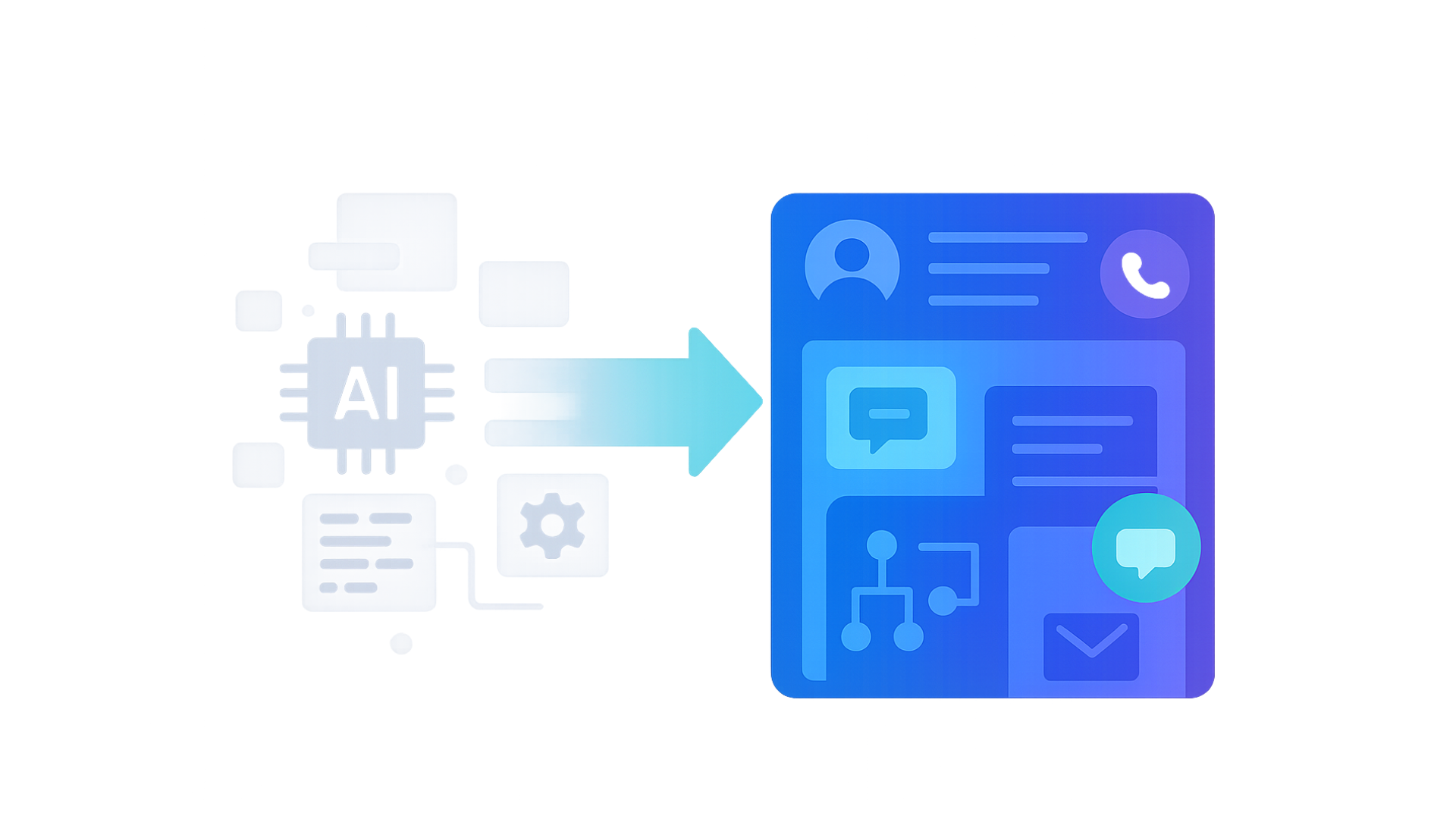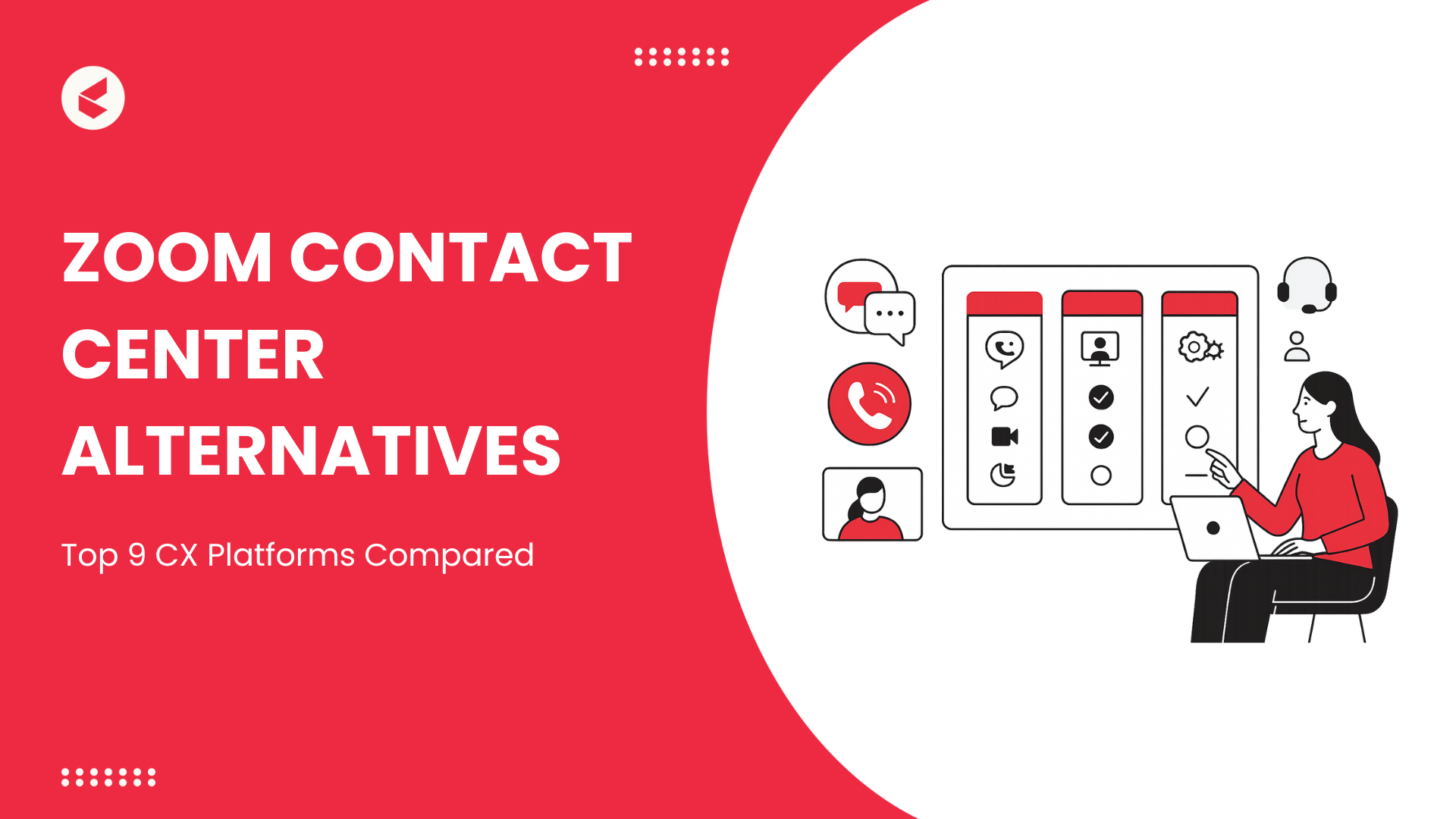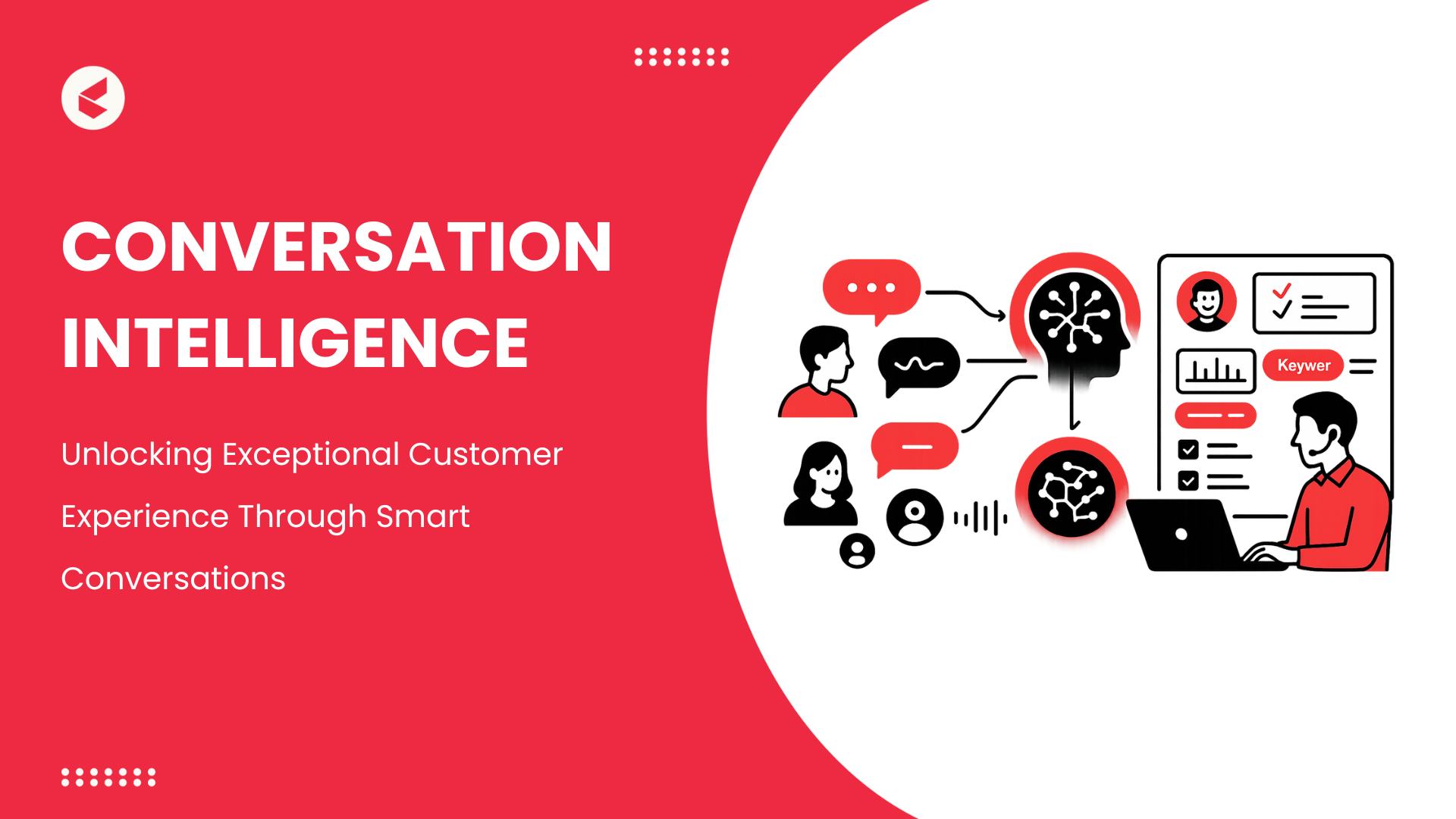Customer experience is built moment by moment. It comes from the full range of interactions across channels and moments in time.
A helpful support call, a delayed response, or an effortless digital experience all influence how people view your brand. Making these moments effortless and emotionally engaging is what turns transactions into trust.
Forrester’s 2024 US Customer Experience Index found that companies that invested seriously in CX in 2023 saw revenue grow 41% faster and customer retention improve by 51% compared to their peers.
In this post, we’ll explore how CX, service, and operations leaders can turn insights into measurable results by uncovering friction, focusing on key moments, and building a 90-day roadmap that aligns teams and drives business growth.
Why Improving Customer Experience Pays Off
Powerful customer experiences create loyalty, promote spending, and make customers great supporters. Customers who have really good interactions come back and also tell others about it in the long run.
Over time, that connection turns repeat customers into a reliable driver of growth. The impact shows up most clearly in three areas.
- Retention and Loyalty: When customers feel understood and supported, they return with trust. Continuity of care enhances the bond and transforms customer contentment into sincere advocacy.
- Revenue and Lifetime Value: Consistent experiences encourage repeat purchases and higher engagement. Every smooth interaction increases satisfaction and strengthens long-term value
- Operational Efficiency: Clear ownership and organized workflows help teams move with purpose. Each member is aware of his/her task, time is allocated properly, and customers receive uniform service without any delays that are not essential.
Great customer experience comes from interactions that feel easy and sincere. Those everyday moments of clarity and care strengthen relationships and lead to results you can measure.
How the “Listen → Orchestrate → Act → Learn” Framework Works and Why It’s So Effective
The Listen → Orchestrate → Act → Learn framework improves customer experience through four practical steps: collecting input from all touchpoints, aligning teams on what the data shows, applying focused changes, and measuring outcomes to shape future actions.
1. Listen
Use every contact point as a source of insight, from surveys and chats to social posts and product feedback. Watch for new needs as they come up and for the factors that shape how customers experience your brand.
2. Orchestrate
Once those insights are collected, bring the right people and systems together to act. Share findings with product teams, prioritise key service issues, and ensure all data remains connected so everyone has the same view.
3. Act
Turn insight into action. Reach out to customers, fix the problems they face most often, and personalize the experience to show genuine care. Each change should make the next interaction easier.
4. Learn
Take time to review what improved and what still needs work. Apply those lessons to strengthen the next round of actions.
The framework succeeds because it’s simple to follow and builds habits that last. It helps teams stay connected, pay attention to what customers say, and make steady improvements that last.
While understanding the framework is essential, identifying specific friction points is where implementation begins.
How to Spot and Fix Friction Across the Customer Journey
Friction in the customer experience is defined as any barrier, delay, or unclear action that hinders or takes a customer longer to process. It substitutes ease with hardships, generates annoyance, and gradually erodes brand image in the minds of the consumers.
Each one adds a small amount of effort that can quietly affect how customers see your business. After identifying these weak spots, many can be fixed right away through better communication or a clearer process. Common friction points include:
- Complicated navigation or broken checkout steps that interrupt digital journeys
- Switching between channels and having to repeat information
- Delays in responses or unclear ownership within service teams
How to Find and Fix Them
- Document the full process from discovery through renewal and highlight any steps that cause confusion or delay
- Bring together CX analytics, survey insights, and service data to understand where people get stuck or leave
- Start with the fixes that have the biggest influence on customer happiness and conversion
- Streamline steps, link all communication channels, and make sure your teams have the same context for every interaction
- Analyze the variations in response time, resolution rate, and customer satisfaction scores over a period of time to confirm the development.
Steadily eliminating obstacles improves the perception of the overall experience, cultivates trust and loyalty among the clients and ultimately leads to higher client retention.
How to Build an Omnichannel Customer Experience That Feels Seamless
When all interactions are seamless, omnichannel assistance functions at its best. When customers switch from chat to email or phone, they expect the story to continue without losing details. What frustrates them most is starting over each time.
To create a unified, consistent experience across all channels, use these strategies:
1. Centralize Customer Data
Bring all information into one shared platform so agents can see:
- Previous conversations and tickets
- Purchase history and preferences
- Open issues or pending follow-ups
2. Keep Context Across Channels
Set up routing that recognizes customers as people, not case numbers. Their history should follow them across touchpoints.
- Link records between channels
- Surface key insights and next steps for agents
- Keep all updates visible in real time
3. Track How Well It Works
Use data to confirm continuity:
- First contact resolution rate
- Repeat contact frequency
- Customer satisfaction after multi-channel journeys
While omnichannel support ensures consistency across touchpoints, empowering customers to resolve issues independently reduces friction and improves satisfaction.
How to Create Effective Self-Service Options
Effective self-service lets customers handle what they came to do, but makes it simple to connect with an agent when they need support.
1. Write for Real People
Build content around real questions, not company language. Focus on:
- Clear, concise articles and step-by-step guides
- Easy navigation and search
- Visuals or short videos that simplify complex steps
2. Watch for Struggle Signals
Monitor where customers slow down or give up:
- Repeated searches for the same topic
- Long session times with no resolution
- Drop-offs before completing a task
These behaviors should trigger an offer for live help.
3. Make Escalation Effortless
When a customer connects with an agent, pass along the full context:
- Articles viewed and searches made
- Steps already completed
- Any previous messages or forms submitted
4. Keep Improving
Review escalations regularly. Update knowledge content when issues recur and refine workflows to reduce confusion.
How to Personalize Responsibly and Manage Data Ethically
The most effective personalization keeps relevance high without overstepping boundaries.
Segment’s 2024 State of Personalization Report notes that 89% of business leaders believe it will play a key role in driving success over the next three years. Similarly, a BCG study found that around 80% of consumers are comfortable with personalised experiences and that a majority expect them.
Here’s a snapshot of what responsible personalization looks like and how to manage customer data ethically while maintaining trust and compliance:
What Good Personalization Looks Like
- Use details like purchase history, support logs, and preferences to make messages feel personal and relevant
- Send communication that responds to real needs, such as renewals, abandoned carts, or follow-ups on open requests
- Share suggestions that genuinely help, like pointing customers back to something they saved instead of showing unrelated offers
How to Govern Customer Data
- Keep sensitive information limited to the right people and check permissions often
- Explain clearly how data is collected and used, giving customers simple ways to opt out
- Review automated systems regularly to spot bias or unfair patterns
- Center personalization on trust so customers feel safe sharing their data
With a transparent approach, CX personalization strategies help loyalty grow, improves engagement, and strengthens long-term relationships with customers.
How AI and Automation Improve CX Speed, Accuracy, and Satisfaction
AI in customer experience management uses automation and machine learning to improve response time, accuracy, and service consistency across channels. It helps teams detect issues early, react correctly, and fix small problems before they impact customers.
When built around real goals, these tools make each interaction feel smooth and dependable. Over time, that consistency builds trust and keeps satisfaction high.
How AI Creates Value
- Speed and Resolution: AI customer experience manages routine work such as FAQs, order lookups, and password resets, freeing agents to focus on trickier situations
- Accuracy and Insight: It gathers details from across tools, adds context, and points teams toward the right next step
- Scalability and Consistency: Automation holds quality steady when volume spikes, so customers don’t wait longer or get mixed answers
How to Apply It Effectively
- Start with routine, high-volume cases and build confidence before moving into complex or sensitive situations
- Keep people involved to bring empathy and judgment to conversations that need a human touch
- Track changes in handle time, resolution rate, and CSAT before and after automation
- Review how AI and agents pass work between them to smooth transitions and cut down on friction
AI handles routine cases effectively, but the escalation rules need to rely on evidence from performance data and customer insights.
Reliable data governance is a must. Every AI solution should comply with privacy regulations such as GDPR, CCPA, and the like to maintain proper data control and transparency.
Bias is a major risk as well. If the algorithms are not monitored, they can easily repeat the unfair patterns. Regular validation, diverse data sources, and human involvement help maintain accuracy and ethical standards in automation.
How to Build an Empowered Agent Workspace
An effective workspace gives agents access to what they need most: clear information and complete context. Agents can concentrate on consumers instead of flipping between tools when all they need is in one location.
- It all starts with having a complete picture of the customer. Every agent should see the person’s history, open cases, and recent messages right away. When a customer moves from one channel to another, the conversation continues naturally without repetition
- Add guidance and quick access to knowledge right inside the workspace. As agents type or check a ticket, the system can surface the most relevant answers or suggestions. Smart routing sends each query to the right person the first time, cutting delays and keeping things on track
With this assistance, agents can handle issues more quickly and with greater assurance. It improves the client experience and raises crew morale.
Tracking Customer Success Metrics That Connect to Real Results
Customer success metrics reflect how effectively your business supports customers in reaching their goals. They turn outcomes like satisfaction, loyalty, and efficiency into insights your team can act on. When you track the right CX KPIs, it becomes easier to see how better experiences fuel growth and stronger retention.
CX data becomes powerful when it connects directly to business performance. The appropriate metrics show how customer experience best practices affect growth, productivity, and loyalty over time.
- Start by tracking key relationship metrics, such as Customer Satisfaction (CSAT), Net Promoter Score (NPS), and Customer Effort Score (CES). When taken as a whole, these metrics show how customers feel, how committed they are, and how simple it is for them to acquire the help they need.
- Pay attention to operational performance. Cost to Serve indicates how effectively your support staff operate, whereas First Contact Resolution (FCR) gauges how frequently problems are resolved on the first attempt.
The real value comes from connecting these signals. When FCR improves and CSAT rises, you know faster resolution is driving satisfaction. When CES drops and churn decreases, customers are finding it easier to stay.
How to Execute Your 90-Day CX Improvement Plan
TL;DR
- Days 1–30: Understand journeys, friction, and feedback
- Days 31–60: Implement quick wins with clear ownership and metrics
- Days 61–90: Scale what works and lock in a longer-term roadmap
A 90-day CX improvement plan is a comprehensive roadmap that allows teams to effectively prioritize, experiment with, and implement changes in a short and quantifiable cycle. It provides a methodological approach to the improvement of customer experience.
The first month is all about comprehension. Engage in customer journey mapping exercises and especially note what people say in their feedback. Then, select a few minor corrections that can make things more pleasant, like quicker responses, hassle-free onboarding, or more concise help articles.
In the subsequent month, start the execution. Assign specific owners, roll out updates, and track initial success with customer experience metrics such as average resolution time and CSAT. The early stages of progress not only create a positive atmosphere within the team but also ensure that the change is considered worthwhile.
The last month is all about scaling. Analyze the successful strategies, enlarge the areas where successful pilots have been, and make a plan for the next six to twelve months. Have specific milestones to keep you accountable:
- Week 4: Customer journey mapping and friction points finalized
- Week 8: Quick wins completed and performance data reviewed
- Week 12: Long-term roadmap and tracking system ready
Each improvement should serve a real business purpose, like cutting churn, implementing customer retention strategies, or managing costs. Keep everyone informed about progress and adjust your actions as the data comes in.
Make CX Easy, Personal, and Continuous with Kapture CX
Strong customer experience starts simple. Make every interaction feel easy and helpful so customers can achieve their goals with less effort.
Apply data in ways that make the experience more useful for customers. Review results often, keep what works, and adjust the rest so improvement feels steady and natural.
Kapture CX gives teams the visibility and tools to do this with connected platforms, smart automation, and insights that drive meaningful outcomes. We help you simplify customer interactions; we also help to make your employees quicker, scale personalization, and improve their performance at every customer interaction continuously.
See how your team can create experiences that truly work for everyone — book your personalized demo today!
FAQs
Focus first on the trouble areas that create the biggest headaches. Solving a few of these early helps build confidence and sets the tone for what comes next.
Monitor smaller projects weekly and assess major programs monthly or quarterly. Frequent reviews keep goals visible, allow quick adjustments, and help maintain energy around improvement.
Measure the connection between experience and outcomes by tracking churn, repeat business, and support costs. Showing progress in these numbers helps position CX as a driver of financial performance.
Get your team involved before rolling things out. Explain the reasons for change, invite feedback, and keep talking as things progress. Show quick results and recognize the people who make them happen.
Keep reviewing how things work. Listen to customer feedback, test a few small ideas, and fix the rough spots that slow people down. That habit keeps improvement consistent.













